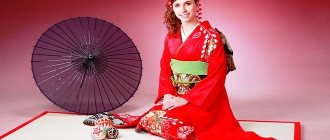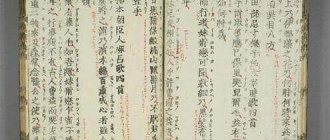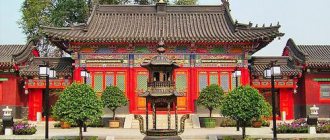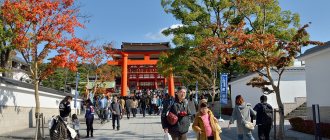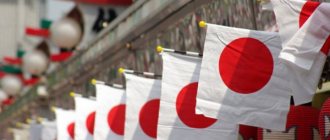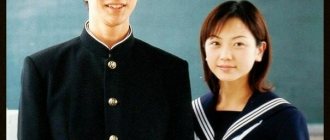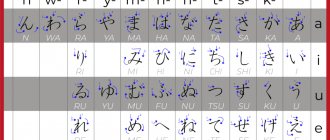One of the most important components of Japanese culture and the Japanese worldview is music. With this work we open a series of articles devoted to the unique traditional musical culture of ancient and modern Japan.
Japanese traditional music is called ho:gaku (邦楽(ほうがく) in Japanese. You can also find the names 和楽(わがく)or 国楽. Sometimes, to separate the concepts of traditional and popular music, Japan uses the term 「純邦楽」, which literally means “authentic Japanese music (traditional).”
The genre diversity of Japanese traditional music is great. It is not possible to consider them outside the cultural and historical context, since musical genres, songs and poetry in Japan are always a spiritual reflection on historical, cultural, and religious events.
Therefore, focusing on music, for a more complete understanding of its historical dynamics, we propose to consider it in a certain historical and cultural context. Moreover, this is exactly how the history of Japanese traditional music is presented on the Japanese website of the national musical tradition of the land of the rising sun jtrad.columbia, the materials of which served as the basis for the author’s translation and creation of this article.
So, the history of the formation and development of traditional Japanese musical culture can be divided into several stages: Ancient period
(prehistoric - 1185 AD, end of the Heian era)
Medieval period
(1185 - early 17th century, beginning of the Edo era)
Early Modern Time
(Edo era 1600 - 1868)
Post-Meiji Restoration period
(since 1868 to present time)
Each period is unique in its song forms, vocal works, stylistic diversity and instrumental sound. Traditional Japanese music still maintains the continuity of ancient Japanese musical traditions, representing an invaluable world cultural heritage.
Going back centuries. Music of Ancient Japan
About the music of Japan from the ancient periods Jomon ((縄文時代) - from 13,000 BC to 300 BC) and Yayoi ((弥生時代) - 300 BC - 250 AD . BC) very little is known, but archaeologists have found ritual figurines of musicians, indicating the important role of music in the early stages of the formation of Japanese society and culture. Late Yayoi was marked by the construction of large funerary structures. There are also supposedly many powerful clans that existed during this period, which gradually led to the dominance of the Yamato clan. The state they built used the language, religion and legal system of the Asian continent, and resulted in the high development of the imperial court as a political and cultural center during the Nara (645-710) and Heian (794-1185) periods. Even as the political power of the imperial court diminished, the imperial court nevertheless continued to maintain its traditions, many of which continue to exist to this day.
What little remains of the prehistoric period are a few songs, legends and rituals recorded in the first written chronicles of the Japanese state, the Kojiki (古事記/Kojiki) and the Nihon Shoki (日本書紀/Nihon Shoki). During the reign of Emperor Tenmu (673-686) - the period when the "Records of Ancient Deeds" (Kojiki) were compiled - these songs were already a tradition of the imperial court.
From the earliest stages of Japanese history, poetry and song have been very significant cultural components and the clear distinction between these two cultural forms is not entirely clear. The word "uta"
(歌) could mean both “song” and “poem” in ancient times. What is known is that poetry has almost always been presented as the action of “reading (singing) out loud.”
During the Nara (710–794) and Heian (794–1185) periods, poetic standards were established in the oldest imperial anthologies of Japanese poetry, Manyoshu (万葉集/Collection of Myriad Leaves) and Kokinshu (Collection of Old and New Songs of Japan). The stanza forms, versification, and use of poetic imagery developed during this period are reflected in virtually all Japanese music and have persisted to this day.
Poetry and music also took center stage in the prose works of the time. In The Tale of Genji (author Murasaki Shikibu, 1024), for example, most of the dialogues are constructed in poetic song form. Dancing accompanied by Gagaku music and musical instruments such as the koto (箏/Japanese plucked instrument), flute (笛), and biwa (琵琶/ the common name for the national Japanese lute instrument) form the cultural backdrop of this classic novel.
Note that most of the official Japanese culture of the time used Chinese, but Chinese and Japanese are very different. Chinese is monosyllabic and has tones, while Japanese has long polysyllabic words (with many syllables) and does not have a tonal system. Chinese was used in its original pronunciation and with various ways to read its Japanese words, but native Japanese literature of the Heian period and especially Japanese poetry, according to the materials of the site indicated above, tried to avoid words of Chinese origin as much as possible.
Music of Japan
Previously, in Japan, all Western-style popular music was called “kayokyoku”[35], but by the early 1990s, the situation in Japanese music began to resemble that in America and Europe - all genres were fragmented, mixed and confused. All the old categories of Japanese music either lost their meaning or came to mean something else, and the term "kayokyoku" continued to be used almost exclusively for "idol" singers.[36] Then, for the simplicity and convenience of customers, Japanese music stores decided to categorize all modern Japanese pop music as “J-pop”, and collections of ballads in the enka style began to be called “kayokyouku”[36]. Nowadays, stores typically divide music into four shelves: J-pop (Japanese pop music, including rock), Western pop, enka (old-fashioned Japanese ballad) and classical music. What was once called kayokyouku is now classified as either J-pop or enke, depending on the style.
Japanese pop music
Main article: J-Pop
Queen of Japanese pop Ayumi Hamasaki performing in 2008.
Modern Japanese pop music emerged around the 1990s, but its roots can be traced back to the 1960s, during the popularity of bands like The Beatles in Japan.[37] The genre that began then and still exists today replaced the so-called kayokyouku music (Japanese: 歌謡曲kayo:kyoku
, "lyrical performed music"), which was a phase of Japanese pop music from 1920 to 1980, after which J-Pop became the dominant form of the genre.[38]
Unlike previous stages in the development of Japanese popular music, J-pop was specifically named in the English manner[39]. Also, elements were borrowed from Western music that were not found in traditional Japanese music as such[40]. Despite the fact that modern music has gradually moved away from the use of Japanese pentatonic scale and traditional melodies and moves, compositions written using traditional singing or melodies remain popular among the country's residents[40]. Gradually, groups of the so-called “guruppu sounddo” (Japanese: グループ・サウンズ, “Group Sound”, “group sound”) began to form, which were influenced by The Beatles and were a transitional link between Japanese music of the old and new, “Western” type[40 ].
For the first time, the term J-Pop itself began to be used on the J-Wave radio station, and initially it was always pronounced and written in a Western manner[38]. At the same time, the vocalist of the pop group AAA, Mitsuhiro Hidaka, believes that J-pop was originally derived from the Eurobeat genre, which originated from Eurodisco and is extremely popular in the country[41]. However, the concept of “J-POP” has become much more general, so much so that the most popular rock bands of the 1990s began to be classified as it, and some musicians began to classify themselves as a genre, meaning the presence of popular motifs in their work[ 38]. In 1990, Tower Records Japan defined j-pop as a term to include all Japanese music produced by the Japanese recording industry in Japan, excluding independent music (called j-indie).[42]
Initially, the Japanese pop music scene was dominated by musicians of the so-called Bingu kei style .
)[43], which included musicians from the popular 1990s label Being Inc.[43][44].
Among these performers was also the rock band B'z. In the early 1990s, the young J-pop singer Namie Amuro gained popularity, becoming a music star by 1995-1997. She pioneered many of the popular fashion elements of future gyaru, such as girls copying her miniskirt + boots style and spending a lot of time in the tanning salon to get the same tan as hers.[45][46][47] In 2009, she was named "Japanese fashion icon number 1" by Tsutaya Online
, and in the voting she beat out her main rival in the musical genre, Ayumi Hamasaki.[48]
Her fans or simply girls who follow the style were nicknamed Amuraa
[49]. It was at this time that the term Gal began to actively spread and became a fashionable word[50]. It began to be used to describe young girls who considered entertainment, sex and expensive branded clothing to be the main values in life[50]. At the same time, gyaru fashion is popularized overseas, and the appearance of gyaru becomes a popular erotic fetish[51].
In the early 2000s, the initiative was seized by the Avex Trax label, which relied on strong performers like Ayumi Hamasaki[52] and more active promotion of its artists, confidently dominating Japanese pop music[53]. Among the musicians who record on this label are such names as Gackt, Girl Next Door, AAA, Do As Infinity and others. According to CNN, Avex Group - to which the label belongs - already effectively controls Japanese pop culture.[54]
Japanese jazz
According to some estimates, Japan has the largest number of jazz fans in the world.[55] In addition, in the birthplace of jazz - the USA - there is a genre of “Asian-American jazz”, based on a mixture of traditional jazz with Japanese culture. Despite initial accusations of inferiority to American jazz from Japanese and American critics, Japanese jazz was able to change and gain ground in the country, primarily through experimentation with folk melodies.[56] According to some critics, Japanese jazz as music conveys the ideals and atmosphere of Zen Buddhism.[57] Currently, the center of the Japanese jazz scene is in Tokyo[58]; at the same time, many performers come from other cities.
Japanese rock music
Main article: J-Rock
Japan's rock metal scene is vast. Iconic Japanese rock bands, such as heavy metal band The Alfee, attract audiences of more than 100,000 people.[59] Some groups made contributions to global genres such as New Romance.[60] The group B'z achieved particular success. They sold over 79 million records in Japan alone[61] and became the first Asian group to have their own star on the Hollywood Walk of Fame.[62] At the same time, Japanese metalheads with the visual kei subculture borrow from each other: they often perform in each other’s “territory” and influence each other musically[63].
Japanese metal
Loudness in its modern lineup performs in Hamburg, Germany in 2010.
The pioneers of Japanese metal are considered to be the hard rock band Bow Wow, which appeared in 1975[64], and the cult heavy metal band Loudness, which appeared in 1981; its leader and guitarist Akira Takasaki is very famous[65]. Together with fellow cult band Anthem, led by famed vocalist Eizo Sakamoto, the three bands spearheaded the fledgling Japanese metal movement.[66][67] All of them managed to become well known in the West in the 80-90s, but at the same time their sound represented the Japanese interpretation of the then popular trends in Western metal music. Particularly noteworthy is also the heavy metal group Seikima II, which appeared in 1982 and used a style inspired by the group KISS, along with a heavy but melodic metal sound.[68] The provocative image, unusual for Japan at that time, was able to make the group one of the most famous metal bands in the country, but Seikima was practically unknown outside of it. The group's vocalist, Demon Kogure, became the most famous; after the group's breakup, he began a successful solo career and was often mentioned in connection with Japanese pop culture.[69][70] Other notable Japanese bands during the genre's emergence included 44 Magnum, Show Ya, SABER TIGER, Earthshaker, and the later Sex Machineguns.
At this time, the young guitarist hide, at the invitation of Hayashi Yoshiki (Japanese: 林佳樹), became a member of the glam metal band X Japan[71], which later became an innovator in visual kei[72][73]. Despite the fact that the group has existed since 1979 (unofficially), they debuted only in 1985 with the single I'LL KILL YOU (Japanese), dedicated to the Vietnam War[74]. In order to stand out from the ranks of indie bands and be different from others, Yoshiki and Hide were the first to use the image of Western glam metal bands, at a time when other groups used the standard metal image[72][73], and Hide was their fan. Soon the group received major status and became the most successful rock band in Japan[75]. In response to the question “What is the essence of your creativity?” Yoshiki described it as “Psychedelic Violence - Crime of Visual Shock.”[76] Other Japanese rock bands decided to follow this path. Many Visual kei bands of the 1980s performed glam metal , and emphasized a grotesque image: these included X Japan and COLOR (English).[77] The latter's vocalist, Tommy "Dynamite", subsequently founded one of the largest labels, Free-Will, in 1986.[78] The work of these bands were mainly similar to Western (mainly American and British) glam metal[73].
With the rise of these bands, Japanese metal split into two main movements: one influenced by glam metal, and the other influenced by predominantly Western-style heavy metal.[79] Subsequently, they will give impetus to visual kei and Japanese metal as such, respectively. But in the early to mid-90s, the Japanese metal scene experienced a crisis, caused in part by the breakup of many key bands and the death of several famous musicians, such as hide, who passed away in 1998.
The next impetus for the development of the genre was given in the late 90s and early 2000s, when the Japanese school of power metal began to take shape thanks to groups such as Galneryus, Concerto Moon and Versailles, as well as the solo works of guitar virtuosos Hizaki and Takayoshi Omura. All of these bands differed from Western power metal by having more tangible neoclassical elements, an emphasis on virtuosity, and an overall powerful symphonic sound. In the late 2000s, metal began to have a significant influence on neo-visual kei groups, bringing fame and glory to virtuoso and heavy bands such as The Gazette, NoGoD, and Matenrou Opera.
Japan also has an extreme metal scene, with some bands managing to make it onto the world stage, mainly black and melodic death bands such as Sigh[80][81], Blood Stain Child, Sabbat, as well as drone metal bands Boris[82]. In addition to them, elements of extreme music can be seen in a number of modern visual kei groups, such as -OZ- and Deathgaze, who experiment with groove metal and metalcore, while at the same time staying within the boundaries of their genre.
Visual kei
Main article: Visual kei
Sin, vocalist of the popular young rock band ViViD in 2010
visual kei
(Japanese: ヴィジュアル系
Vijuaru kei
, “visual style”, “
Visual kei
”) is a genre of Japanese music that arose on the basis of J-Rock[83][84] as a result of mixing it with glam rock, metal and punk rock in the 1980s[85][86][87][88]. "Visual kei" literally means "visual style". This is the name of a movement in Japanese rock music that is distinguished by the use of makeup, complex hairstyles, colorful costumes, and often androgynous aesthetics.[72][89]
The founders of this style in Japan were such groups as X Japan, Buck-Tick, Luna Sea, Malice Mizer and others; they were greatly influenced by Western glam rock bands[90]. The essence of visual kei style is to convey part of one's talent not only through music, but also through appearance: music and appearance come together and convey a common meaning, thus shocking and attracting listeners. Central to the aesthetics of Visual kei is the androgynous ideal of man[72][86]. From a Japanese point of view, a feminine man who wears makeup is not gay, but quite the opposite - a ladies' man[91][92]. A subculture has formed around visual kei, the driving force of which was the core of fans of bands of this genre, who used the image of their favorite musicians: most of them were men, who, in turn, used women's makeup and clothes[93][94][95][96] .
Japanese ska
Japanese ska
is mainly third wave ska mixed with metal, funk, folk music, punk and/or country.[97][98] The most famous Japanese ska band is the Tokyo Ska Paradise Orchestra, which was formed in the 1980s and achieved great popularity in Europe and the United States due to its unusualness for listeners in these regions[99][100]. Other well known bands are Kemuri, Oreskaband and Beat Crusaders.
Japanese noise
Emerging in the early 1980s[101], the Japanese noise scene, with its absolute musical freedom, is one of the most famous modern Japanese musical genres. There are several hundred noise musicians and bands in Japan, among them: “Merzbow”, Masonna, Aube, “Contagious Orgasm”, “Melt-Banana”, “Pain Jerk”, “KK NULL”, “Ruins”, “CCCC” , "Boredoms", "Killer Bug", "Government Alpha", "Diesel Guitar", "Incapacitants"[102][103][103][104]. Japanoise has a special influence in America. Japanoise is a very radical subculture, among which you can often find people interested in sadomasochism, scatology, sexual anatomy, torture, pornography, futurists and dadaists, all kinds of deformities and pathologies[105], and the performances of Japanoise musicians are sometimes accompanied by violence and end in pogroms[105]. 106].
Japanese hip hop
Despite the genre's popularity in Japan, hip hop is a relatively new genre on the Japanese scene.[107] Back in the 80s, there was a misconception that the Japanese language cannot rhyme to the rhythm that American rappers set[108]. At the same time, critics note the openness of the Japanese hip-hop scene to new people and innovation[109][110]. Typically, the history of Japanese hip-hop (often written as J-Hip-hop[111]) dates back to the early 1980s, when producer Hiroshi Fujiwara returned to Japan and founded the first Japanese hip-hop label.[112] Famous Japanese hip-hop groups include the Teriyaki Boyz group, which works with many famous foreign performers; they recorded several songs for the soundtrack of the movie Fast & Furious: Tokyo Drift. At the same time, one can note significant elements of hip-hop in such Japanese rock groups as Maximum the Hormone, SuG and early LM.C.
Style features of Japanese music
The modal structure of Japanese music is fundamentally different from the European system. The basis is a scale of 3, 5 or 7 tones. The mode is not major or minor. The intonation in Japanese folk music is unusual to the European ear. Pieces may not have a regular rhythmic organization - meter, rhythm and tempo often change. The structure of vocal music is guided not by the pulse, but by the breath of the performer. This is why it is well suited for meditation.
The lack of musical notation is another feature of Japanese music. Before the Meiji era (i.e. before the arrival of the European recording model in the country), there was a system of notations in the form of lines, figures, and signs. They symbolized the desired string, fingering, tempo and character of the performance. Specific notes and rhythm were not prescribed, and the melody was impossible to play without knowing it in advance. Due to the oral transmission of folklore from generation to generation, much knowledge was lost.
A minimum of dynamic contrasts is a stylistic feature that distinguishes Japanese music. There are no sharp transitions from forte to piano. Moderation and slight variations in dynamics make it possible to achieve expressiveness characteristic of the East. The climax in Japanese tradition occurs at the end of the play.
National Japanese music and instruments
The Land of the Rising Sun Japan has a distinctive and unique culture. The heritage of a great nation is closely linked to music. National Japanese music is the same original phenomenon, which was due to the isolation of the country.
The people of Japan always treat the cultural monuments of their homeland with care and respect. Any music is impossible without musical instruments. Japanese musical culture has its own unique genre. This explains the variety of instruments that are used to create musical masterpieces.
Famous musical instruments
One of the most famous Japanese musical instruments is the shamisen , which is similar to the lute. It belongs to the category of three-string plucked instruments. It is derived from sanshin , which in turn is derived from sanxian , which is native to China.
Japanese music and dance cannot do without shamisen, which is still revered in the Japanese islands today and is often used in the Japanese Bunraku and Kabuki theater. It is also important that playing the shamisen is included in the training program for geishas - maiko.
National Japanese music is also inextricably linked with flutes. The musical instrument fue belongs to the family of flutes, which are known for their high-pitched sound. They are made from bamboo. This flute originated from the Chinese pipe - " paixiao ".
The most famous flue of the fue family is the shakuhachi ,
which is used as a musical instrument by Zen Buddhist monks. According to legend, the shakuhachi was invented by an ordinary peasant. When he was transporting bamboo, he heard a wonderful melody that came from the bamboo when the wind blew into it.
The fue flute, like the shamisen, is often used for accompaniment in the Banraku and Kabuki theaters, and various kinds of ensembles. Some of the fouet can be tuned to the Western style, and thus become soloists. It is interesting that previously playing the fue was characteristic only of Japanese wandering monks.
Suikinkutsu
Another instrument that represents Japanese culture is the suikinkutsu . It has the shape of an inverted jug with water flowing from above. Getting inside through certain holes, it causes the instrument to emit a sound that is very similar to the ringing of a bell. This instrument is played before the tea ceremony, and is also used as an attribute of a traditional Japanese garden.
By the way, for convenience, the tea ceremony can take place in the garden. The sound of the instrument plunges a person into an inexplicable feeling of relaxation and creates a contemplative mood. This state is very suitable for immersion in Zen, since relaxing in the garden during the tea ceremony is part of the Zen tradition.
Taiko
taiko instrument is more understandable to our perception .
which translated into Russian means “drum”. Taiko became famous in military affairs, by the way, just like his counterparts in other countries. As they say, in the chronicles of Gunji Yeshu, nine by nine blows meant a call to battle, and in turn, nine by three meant that the enemy must be pursued.

